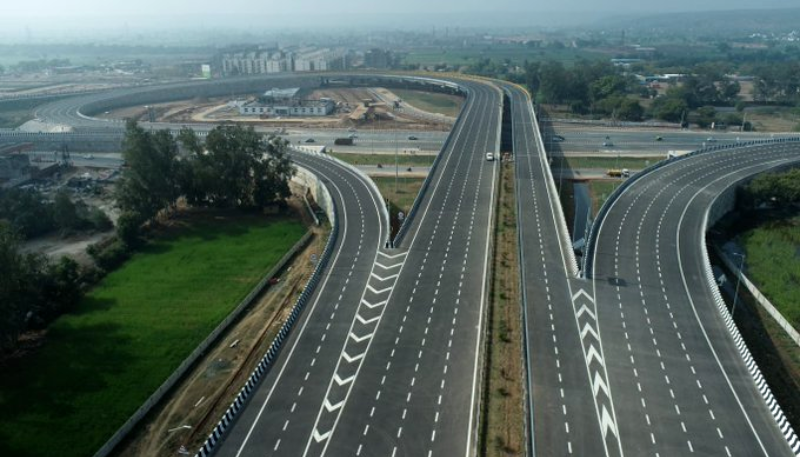
India has opened the first stage of its longest expressway, which connects Delhi and Mumbai, as part of a concerted infrastructure push to catch up to geopolitical rival China.
The $13 billion (£10.8 billion) project will eventually cut the time it takes to travel between the country’s two largest cities in half, to 12 hours.
India is the world’s fastest-growing major economy and will soon be the most populous, but its infrastructure lags decades behind that of its northern neighbor.
A sign above one of the new four-lane highways read, “Welcome to the Delhi-Vadodara-Mumbai expressway,” a 1,386-kilometer route (861 miles).
On Sunday, Prime Minister Narendra Modi inaugurated the 246-kilometer first stage, which connects the capital to the tourist city of Jaipur in Rajasthan. He said it was a “sign of developing India”, adding that “such investments in railways, highways, subway lines, and airports are key to pushing the country’s growth rate, attracting more investments and creating fresh jobs”.
Since a deadly military clash on their Ladakh border in 2020, Asia’s third-largest economy has made a renewed push to decouple itself from an increasingly assertive China’s supply chains and build up its economic capacity.
A wary New Delhi has accelerated many key projects, and Modi’s government announced an unparalleled 33% increase in infrastructure spending earlier this month.
In the coming months, Prime Minister Modi is expected to inaugurate at least a dozen major railways, highways, expressways, and port projects.
India has one of the world’s largest rail networks, employing 1.3 million people, but it is badly outdated and requires massive investment in track and rolling stock, which authorities are seeking to fund with private capital.
Beijing, for its part, has poured hundreds of billions of dollars into infrastructure over many years, and China now has an extensive highway system, gleaming airports, and the world’s largest high-speed rail network.
The country’s first high-speed rail line, a $13 billion Japanese-funded project connecting Mumbai and Ahmedabad, is still under construction and has been hampered by land acquisition and other bureaucratic snags.
According to Harsh V Pant, a professor at King’s College London, Indian officials “believe that it is in a geopolitical and geoeconomic sweet spot which needs to be leveraged with higher infrastructure expenditures to make it an even more lucrative and attractive economy” as China “loses some of its shine”.
“China’s economic growth and infrastructural development began a few decades earlier than [India’s], so there is still a lot that it needs to achieve in terms of matching up to China,” he added.






